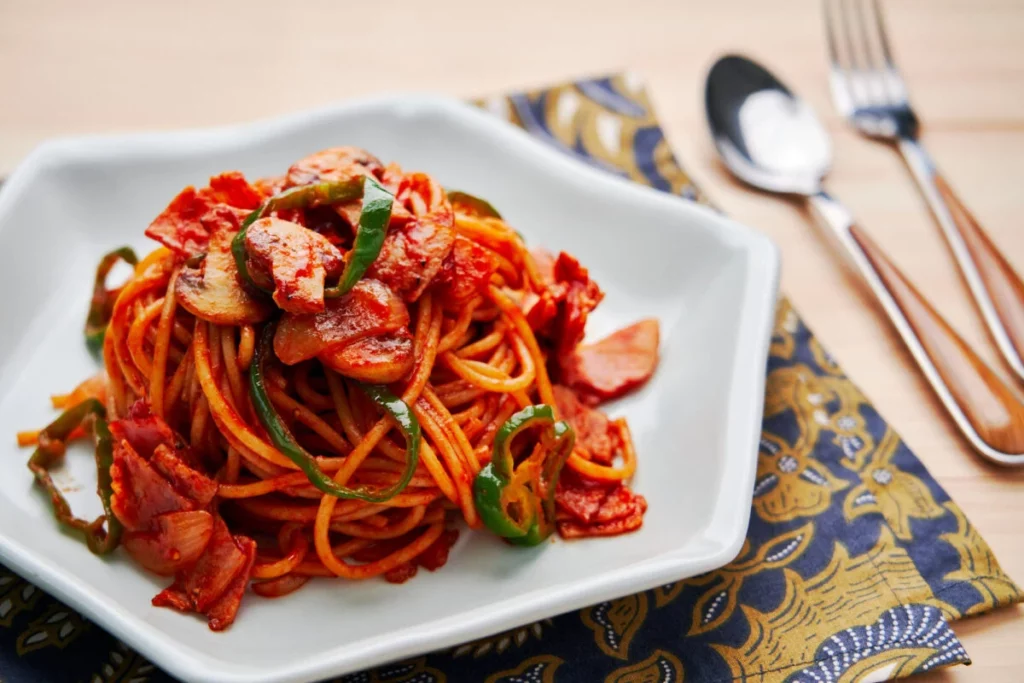
The word “Napolità” refers to the spirit of Naples and the surrounding southern Italian area. It’s an idea deeply ingrained in the history of the city, representing the spirit, customs, and—above all—gastronomy of Naples. In order to get a complete understanding of Napolità, one must experience the city’s bustling street life, which is rich in history, and the diverse range of flavours it has to offer.
History of the Term “Napolità”
The Italian term “napoletano,” which means “Neapolitan,” is where the word “Napolità” originates. The language’s rich past dates back to the days when Naples was a bustling hub of trade and culture. It was influenced by other languages, such as Arabic, Greek, and Latin, and as a result, it developed into a linguistic melting pot.
The Heart of Napolità A Melting Pot of Flavours
The food, a diverse tapestry of flavours and customs handed down through the ages, is the essence of Napolità. Neapolitan food is a gastronomic adventure through an abundance of dishes that represent the city’s rich history and its role as a melting pot of flavours. It’s not only about the famous pizza and spaghetti.
Napolità Cuisine: More Than Just Pizza and Pasta
Although pasta and pizza are staples of Neapolitan cuisine, there is much more to explore. Fresh seafood meals like Zuppa di Pesce are must-trys when visiting the shore. Because of Mount Vesuvius’ close proximity to the city, premium ingredients are produced, such as San Marzano tomatoes, which are the foundation of an ideal Neapolitan pasta sauce.
Delights of Napolità: From Sfogliatella to Limoncello
Sweet dishes like Sfogliatella, a light pastry stuffed with ricotta, and Limoncello, a smooth, sweet liqueur produced from the peel of fresh lemons from the breathtaking coastline, are also among Napolità’s joys. Made from the milk of buffalo, mozzarella di Bufala is a rich, creamy cheese that is a staple of many Neapolitan recipes, such as the classic Margherita pizza.
The World of Napolità Through Neapolitan Language and Heritage
The Neapolitan language, a Romance language spoken by millions in and around Naples, is another manifestation of Napolità. According to Wiktionary, it is a separate language or a dialect of Italian. The heart of Naples is conveyed through the language, which echoes the allure of its citizens and their modest yet vibrant cultural life.
The City’s History: A Backdrop for Napolità
Naples is well-known for its UNESCO World Heritage Site, the old city centre, and the Pompeii ruins, which depict the story of a city enmeshed in the past. The city’s distinct sense of community and identity is greatly influenced by its history, which has an impact on everything from the local food to the way of life of the Neapolitans.
Mount Vesuvius and The Bay of Naples: Symbols of Napolità
The stunning Bay of Naples and the famous Mount Vesuvius serve as emblems of the city’s rich cultural and historical heritage. Additionally, they serve as the backdrop for a number of components used in Napolità cuisine, including the Aglianico wine grape and the well-known San Marzano tomatoes.
The Must-Try Experiences of Napolita Cooking
There are some activities you just must have when visiting Naples for a gastronomic adventure. It is important to sample real Neapolitan pasta recipes like Pasta alla Puttanesca and Spaghetti alle Vongole (spaghetti with clams). Not to be overlooked is the classic Caprese salad, which is just tomatoes, mozzarella, and basil—the colours of the Italian flag—combined in a straightforward but delicious way.
The Rich History of Neapolitan Dishes
Napolità cuisine offers a glimpse of the city’s past with every mouthful. Using regional ingredients that have been favoured for ages, Pasta con Clams (like Pasta alle Vongole) and Eggplant Parmesan (Parmigiana) offer robust flavours. The region’s rich culinary legacy is embodied in even seasonal favourites like panettone, which have a Neapolitan flair.
Conclusion
In order to fully appreciate Napolità’s appeal, one needs to stroll around its ancient alleys, indulge in the real pizza at casual pizzerias, and realise that the city’s steep, lively streets are just as much a part of Naples as its cuisine. The vivid, delectable world of Napolità food is explored through each meal, which is a celebration of the city’s rich history and sense of community. Maybe it’s the ideal crumbly pastry.
FAQs
Is Napolità a dying language?
Despite its difficulties, Napolità is still working to maintain its vitality.
How does Napolità differ from standard Italian?







